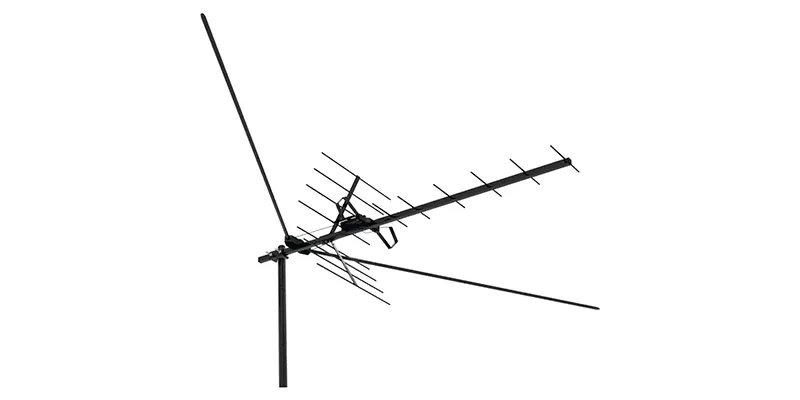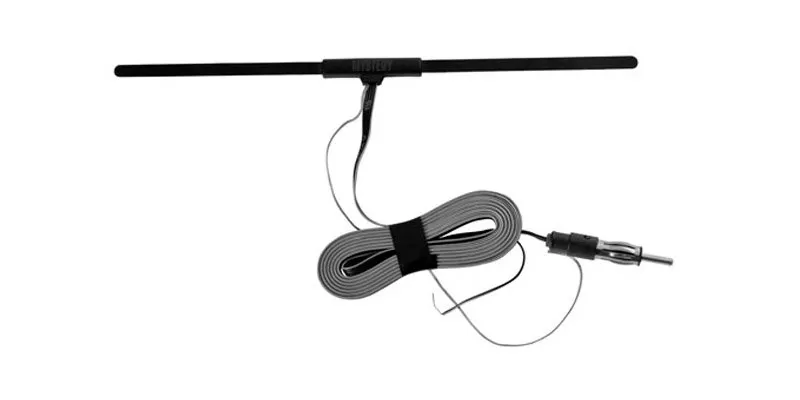
What is the difference between active and passive antennas
When choosing an antenna for watching over-the-air television, you may encounter a rather unusual seller’s proposal — to install «active» instead of «passive». And what is the difference between these two types is not clear.
Let’s figure out what is the difference between active and passive antennas — and which ones are better to use.
How Antennas Work
Terrestrial television is transmitted through the air in the form of radio waves of various frequencies. And this is true for both analog and digital signals. Antennas, in turn, are necessary to capture them.
The metal parts of the antenna, being in the electromagnetic field formed by the television signal, are “induced”. They form a current that enters the TV. It is then converted by the device into a video and audio signal that is understandable to the viewer.
In principle, the operation of the antenna device is very simple. However, this mechanics creates the need to place the receiving equipment in such a way that the current is induced in it most efficiently. It is not enough just to put a metal «slingshot» on the window or place it on the roof — you also need to deploy it so that the «blades» receive the signal in the best way.
What is a «passive antenna»

The above technique is valid primarily for passive configurations. They are simply a metal signal receiver connected via cable to a TV or radio. They do not have any additional structural elements — just a few «blades» that induce current.
Passive antennas are distinguished by the complexity of the geometry. They have many «horns», which are subdivided into smaller «antennae». In some cases, they can even turn into grids. This is done so that the metal frames, being in an electromagnetic field, pick up radio waves in the best way.
However, powerful radio waves — for example, from nearby transmitters — can also be picked up by passive antennas with a simple design. For example, from a hanger and two tin cans. Such an “antenna” can easily “catch” the Europe-24 channel, because it even catches a “potato” — it has so many transmitters, in every city, or even district.
Advantages of a passive antenna
-
Simplicity and durability. Devoid of any unnecessary details, such a device can work for decades;
-
No risk of shorting the antenna cable during proper operation;
-
Low price.
Disadvantages of a passive antenna
-
It is required to accurately orient the metal parts in space, pointing either towards the nearest tower, or perpendicular to it (depending on the geometry and the specific model);
-
It is necessary to carry out installation at a high altitude. Usually such «slingshots» are placed on the roofs of houses or freestanding poles;
-
The quality of signal reception depends on many factors, including the proximity of high-voltage lines, trees, buildings, structures, as well as weather conditions and terrain.
It is most difficult to install a passive antenna in urban areas. It needs to be placed on the roof of the house and pull the cable through many ceilings. When installing on a facade or balcony, questions may arise from the HOA or UK, and when installed directly in a room, the signal quality may be poor.
What is an «active antenna»

Active antennas are structurally similar to passive ones — there are metal «horns» that pick up radio waves and induce current in the receiving equipment. However, the signal is processed by the peripheral before reaching the TV.
A variety of peripheral devices can be installed in active antennas. For example, noise suppressors, signal amplifiers and so on. Thanks to this, it is possible to reduce the number and size of the “horns” to very tiny ones — the main thing is that a current is induced in them at least a little bit, and the amplifier will do the rest.
Advantages
-
Ease of installation. They can be placed both outside and inside the premises. The quality of signal reception also does not depend on weather conditions and the presence of any obstacles nearby;
-
Compact dimensions. There are models only a few tens of centimeters long. They can even be glued to the window — and used;
-
Immunity to interference. The signal is almost always the same and does not depend on temporary external factors.
Flaws
-
Relatively high price. An active antenna can cost several times more than a passive one;
-
Controversial reliability and durability. Such devices use many microelectronic components that can break down over time;
-
The need for a constant power supply. Without it, an active antenna can either “become passive” or not work at all.
It is worth noting that sellers’ assurances that an active antenna works much better than a passive one in most cases are just a marketing ploy. Yes, it provides more reliable and stable signal reception. But it will not be able to show 15 channels where only 2 used to “catch”.
Which one to choose?
Active antennas are most often chosen in the following cases:
-
Installation outside the city, in regions remote from transmitters;
-
Use in areas with an increased amount of external interference (near railways, highways, high-voltage equipment);
-
Installation in rooms with thick walls, including reinforced concrete houses;
-
Placement in areas remote from the digital television transmitter.
Digital television implies an increased «density» of the signal. Because of this, serious requirements are imposed on the quality of reception. As a result, antenna equipment must be directed towards the broadcasting «tower», and if the receiver is far from the transmitter, it must be somehow amplified.
And given that all European regions will switch to digital television from the summer of 2019, now (in April 2019) it makes no sense to buy a passive antenna for installation outside the city.
Добавить комментарий
Для отправки комментария вам необходимо авторизоваться.